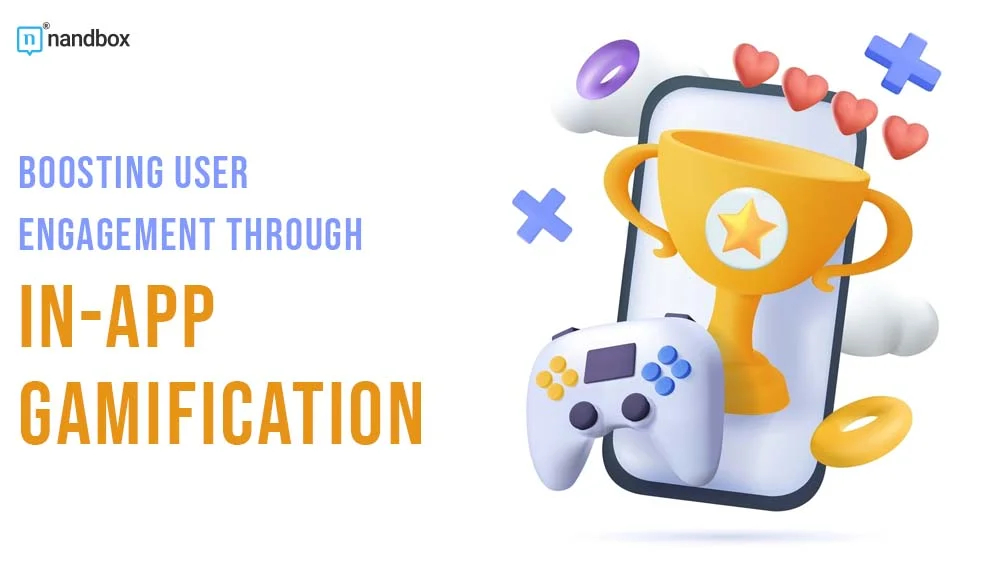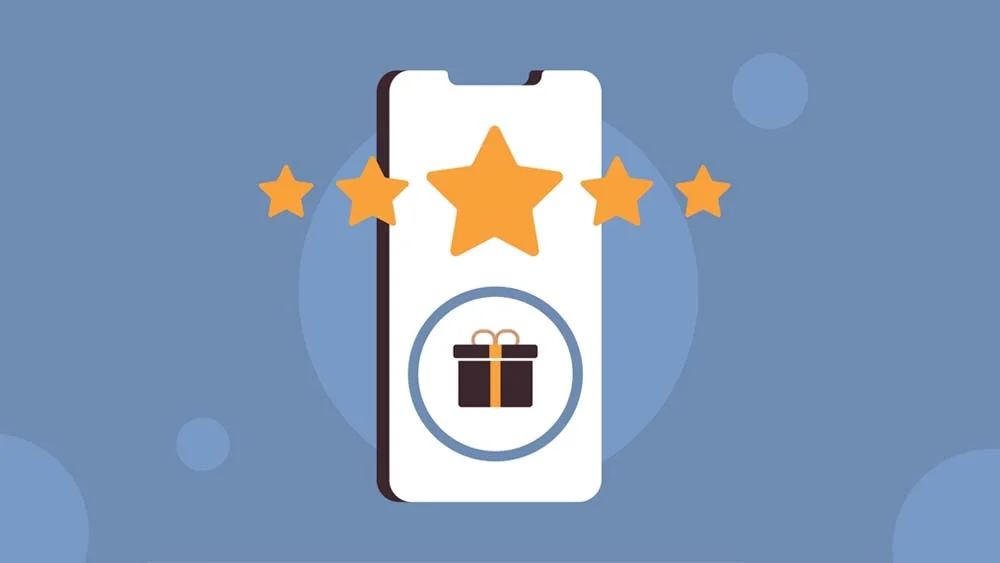Games are as old as humankind. So, it made sense to introduce game-like elements in mobile apps when the tech era rolled around.
Today, the gamification market is huge. Mordor Intelligence projects that it is currently worth $15.43 billion. This is expected to more than double, reaching $48.72 billion by 2029. Why? Because gamification is becoming an essential tool for boosting user engagement.
Curious about gamification and its implications for your business? Keep reading to learn the details and intricacies of this market and how it can help boost return on investment (ROI), reduce customer acquisition costs (CAC), and increase customer loyalty.
Understanding Gamification
Let’s start by understanding what gamification is and is not.
Gamification involves introducing playful, game-like elements to mobile apps. It can be implemented in multiple industries as a marketing tactic that boosts user engagement.
However, and contrary to popular belief, it does not necessarily mean adding games to such apps. Instead, it is a game-like experience that stimulates and encourages greater participation and involvement. Whether it’s Android or iPhone business apps, gamification is key.
So, why is gamification so effective? The underlying reasons are deeply buried in human psychology:
- Gamification boosts motivation as challenges and rewards provide clear goals and a sense of purpose.
- Interacting with others fuels our competitive nature and drives us to be recognized for our successes.
- Achieving something satisfies our desire for accomplishment and triggers the brain’s pleasure centers (releasing dopamine and making us happy), encouraging continued use.
- It’s also a great form of entertainment, boosting fun and excitement levels and capable of surpassing the average attention spans of eight seconds that are the norm for websites.
- It taps into our intrinsic motivation, driving us to do something because it is interesting or enjoyable.
- Integrating social components within apps can stimulate social proof and encourage a sense of community and belonging. This taps into users feeling a part of something greater than themselves.
- It also creates the fear of missing out (FOMO) or loss aversion by participating, which compels users to return regularly to avoid loss.
- Effective gamification in apps can also create immediate and relevant feedback loops that help guide users to certain actions and improve their performance. This generates a sense of progress.
Benefits of In-App Gamification
Apart from the ability to deeply connect with a user on a psychological level, in-app gamification holds multiple, tangible benefits for businesses offering these elements, such as:
- Increased user engagement: Gamification can encourage users to interact and use your app more frequently and for longer periods.
- Enhanced learning and training: Game-like features improve learning outcomes in a learning environment.
- Improved retention rates: Gamified elements can keep users coming back, thus reducing churn rates. According to the Harvard Business Review, increasing user retention by 5% can lead to a profit surge ranging from 25% to 95%. Furthermore, incorporating thoughtful gamification strategies not only boosts user engagement but can also help reduce technical debt by minimizing the need for frequent redesigns or overhauls due to poor engagement metrics.
- User satisfaction and motivation: Gamification can make interactions more enjoyable, fulfilling, and entertaining, encouraging greater user interaction.
- Creating curiosity: It can motivate users to progress to higher levels or encourage them to look for more rewards, once again driving the return rate to your app.
- Creates a positive user experience and boosts loyalty: Engaged users tend to return for more, feeling more attached to your product or offering.
- Makes your marketing efforts more efficient: Your gamification solutions can integrate with your website, app, email campaigns, and more to create a holistic environment that can help make your app marketing efforts more efficient and cost-effective.
- Helps with data collection: Data is like gold for any business and users who are happy to share their data with you mean you can tap into valuable insights to help you identify trends, understand your audience better, and improve your offerings continuously.
- Gives your business a competitive edge: When you do gamification right, your business will have a more loyal following that is more likely to recommend your products to others.
Key Gamification Elements
While most gamified aspects of apps are different from company to company, there are a few shared similarities that we can place in commonly encountered groups. These key gamification elements are among the most important ones to consider as you go on to create a gamified experience for your users. Let’s take a closer look.
1. Points, Scores, And Rewards
Tapping into the brain’s need and desire for rewards, your app can offer an experience through which your users can acquire points and rewards. These points can be redeemed for an appealing offer (such as access to premium content, additional resources, etc.) if they continue to “play” or answer questions correctly. They offer immediate gratification and a sense of accomplishment.
2. Levels, Badges, And Progress Bars
Levels, badges, and progress bars help users visualize how close they are to achieving a specific goal. Representing significant milestones, these act as visual cues, instilling a sense of accomplishment and motivating users to aim for the next level.
3. Leaderboards And Competitions
With leaderboards and competitions, you are pitting users in your app community against each other in a competitive space. This has a strong motivational force where users compete against each other for higher rankings. Ultimately, it leads to a sense of pride and accomplishment, watching their progress in relation to others.
4. Challenges, Missions, And Quests
Encouraging users to take part in a challenge or a quest is exciting, fun, and entertaining. It immerses them into a new world where they can escape while completing missions or quests. They usually have a time limit and various difficulty scores, contributing to higher levels of engagement. This keeps them on your app longer and is more likely to keep them coming back for more.
5. Quizzes
Quizzing your users on various topics and rewarding them for their performance is a great motivating factor. In a learning environment, it’s a great way to reinforce learning and entertainment.
6. In-App Currency
You can also reward your users with in-app currency that is represented by virtual coins won or achieved after a specific action is taken. The value of such coins can be used as a discount on future purchases, which provides a tangible benefit to inspire continued engagement.
7. Random Rewards And Surprises
You can delight your users with unexpected rewards and surprises. Anticipating that they can get a freebie or a random reward from your business will keep them coming back regularly.
8. Other Key Gamification Elements
There are many ways to keep your users engaged with your app and offering. While the abovementioned are the most frequently encountered ones, other ideas include spin-to-wins, interactive scratch cards, loyalty rewards and instant prizes, journeys, streaks, checklists, etc.
Best Practices for Implementing Gamification
Not every gamified element will be right for your business. That’s why it’s essential to follow best practices with your specific business niche in mind. From finance and event planning to educational and health-tracking apps, each one should be distinctly tailored to your audience. Here’s what else to keep in mind:
- Align with core app functionality: You want to ensure that your gamification enhances your app’s main purpose as opposed to distracting from it.
- Define clear goals and objectives: Your goals and objectives within the gamified app experience should be specific and measurable.
- Know your audience: It’s essential to consider demographics, user behavior, and psychographics to design accurate and relevant experiences for your users. Doing mobile app market research should be a primary starting point.
-
Incorporate intrinsic and extrinsic rewards: A combination of these is more likely to motivate users to take action and/or participate.
- Balance fun and functionality: Ensure you offer intuitive design and a smooth user experience (UX). This means making your app easy to navigate, offering a visually appealing interface, etc.
- Keep it simple: Ensure the rules and mechanics of the gamified experience are simple and easy to understand. Keep it as simple and straightforward as possible. Also, ensure that you balance challenges and skill levels to cater to users with different skillsets. Gradually introduce new elements of complexity so as not to overwhelm your users.
- Provide regular feedback, updates, and innovations: Make sure your users have access to real-time progress tracking to gauge their performance.
- Personalize the experience: Your gamified experience should be highly personalized. Use user data to tailor your challenges, rewards, and content. Offer avatars, where possible, to encourage continued participation.
- Ensure accessibility and inclusivity: Make sure you design your gamified elements in such a way that considers different abilities, languages, devices, etc. to ensure more people can participate.
- Measure gamification success and ROI: Tracking mobile app engagement metrics is key to your success. As you measure, you can iterate and constantly improve your offering. A few of these metrics worth mentioning include the following:
-
- Total users
- Daily and monthly active users
- Unique, new, and returning users
- Average session length and frequency
- Churn rate
- Event conversion rates and monetization
- Completion rates
- User retention rates
- Customer feedback and reviews (to measure user satisfaction)
- Social sharing metrics
Challenges and Pitfalls
Gamification can certainly boost user engagement with your app. But it needs to be done the right way. A few challenges and pitfalls that should be avoided include:
Overcomplication
Overcomplicated rules or methods can overwhelm and frustrate users. It can also cause confusion. Furthermore, unfair competition or inaccessible rewards can add to a loss of engagement.
Short-term engagement
Improperly executed gamification elements can lead to shallow user interactions. You should regularly update the gamified experience to ensure new levels of freshness through meaningful rewards, seasonal events, limited-time offers, and special promotions.
Ethical concerns
Systems that are poorly designed may feel manipulated. Another ethical concern is related to overuse of the app by certain users, creating unhealthy behaviors. Users also shouldn’t feel coerced or controlled. They need to have the freedom to engage with these elements at their own discretion. Hence, opt-out options are a necessity. Other ethical concerns include unhealthy competition and privacy concerns.
Conclusion
While integrating gamification in your mobile app is an excellent way to boost user engagement and provide a better user experience, it’s essential to consider industry best practices and avoid common challenges and pitfalls.
The future of gamification is bright and exciting, with novel ideas emerging every day to bring high value to the industry.
App developers and business owners are encouraged to consider gamification while ensuring that the gamified experience doesn’t stray from the true meaning of the app.






